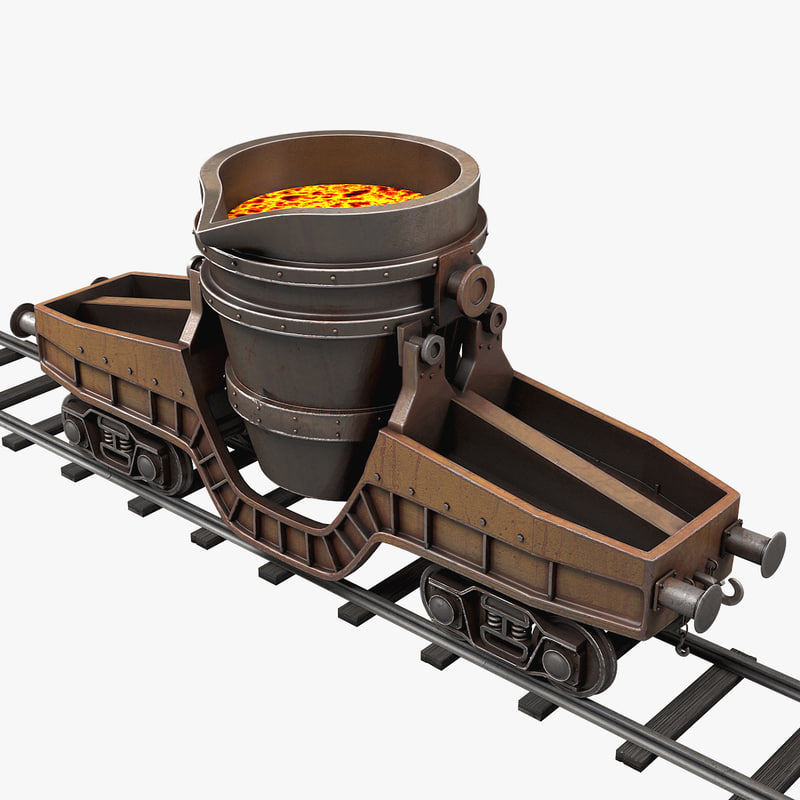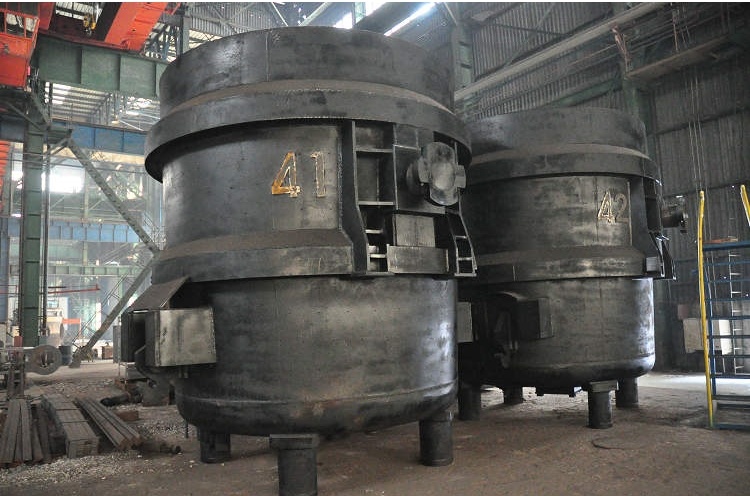The hot metal ladle is a vital piece of equipment in modern foundries and steel plants, engineered for the safe and efficient transfer of molten metal. This robust device plays a critical role in the metal processing industry, ensuring seamless transportation of molten metal from furnaces and melting pots to casting or processing units. In today's competitive industrial landscape, where safety, efficiency, and precision are paramount, the hot metal ladle is essential for operational excellence.
Overview of the Hot Metal Ladle
A hot metal ladle is specifically designed to withstand extremely high temperatures and the corrosive nature of molten metal. Typically constructed from heat-resistant alloys and refractory linings, these devices offer durability and an extended service life. Their ergonomic design maximizes efficiency and operator safety.
In foundries and steel plants, where the transfer of molten metal is a routine task, the hot metal ladle minimizes downtime and reduces risks associated with high-temperature metal handling. Its robust construction ensures reliable performance under severe conditions, enhancing overall process reliability.
Key Design Elements and Performance Capabilities
A standout feature of the hot metal ladle is its ability to endure rapid temperature fluctuations while maintaining structural integrity. The refractory lining protects the ladle from extreme thermal shock, a common challenge in high-temperature environments. Additionally, its design promotes controlled pouring, essential for applications requiring precision.
Manufacturers like HANI TECH and HANI METALLURGY lead the way in innovating high-quality metallurgical equipment. Their extensive experience informs the design and operation of the hot metal ladle, ensuring compliance with industry standards and anticipating future needs. By leveraging advanced metallurgy and material science, these companies enhance the operational parameters of the hot metal ladle in terms of safety and efficiency.
Applications in Foundries and Steel Plants
The applications of the hot metal ladle extend beyond mere metal transportation. It is also utilized in specialized processes such as alloying, stirring, and refining metals. In steel plants, for instance, the ladle is crucial for moving molten steel from the converter to the continuous casting machine. The precise flow control provided by modern hot metal ladle systems directly translates into improved casting quality and reduced waste.
In foundries, the robust design of these ladles protects operators from hazardous conditions, particularly in facilities where multiple ladle transfers occur daily. This engineered solution minimizes risks while maintaining production efficiency.
Advantages and Safety Considerations
Safety is paramount in metal handling operations. The nature of molten metal necessitates tools that perform efficiently while protecting personnel from severe burns and other hazards. The hot metal ladle incorporates multiple safety measures:
-
Robust Construction: Made from high-temperature resistant materials and refractory linings to mitigate heat loss and structural failure.
-
Ergonomic Design: Facilitates safe handling under strenuous operational conditions.
-
Precise Control Mechanisms: Allow gradual release of molten metal, reducing splashing and spillage.
-
Regular Maintenance Intervals: Enhance longevity, ensuring reliable performance over extended periods.
These safety attributes, combined with efficient metal transfer, establish the hot metal ladle as a trusted tool in environments where safety is non-negotiable.

Technical Specifications and Performance Parameters
To appreciate the engineering behind the hot metal ladle, it is essential to examine its technical parameters. The following table provides a detailed overview of the equipment’s specifications, reflecting its capabilities in capacity, thermal resistance, and mechanical strength.
| Parameter | Specification | Typical Range/Details |
|---|---|---|
| Capacity | Volume | 5 – 100 cubic meters |
| Operating Temperature | Thermal Range | Up to 1700°C (3092°F) for steel, higher for other alloys |
| Refractory Lining Material | Material Type | High-alumina, Silicon Carbide, Zirconia-based materials |
| Body Material | Material Type | Heat resistant alloys (e.g., Inconel, stainless steel) |
| Pouring Accuracy | Accuracy | ± 1% volume control |
| Handling Mechanism | Design Feature | Mechanical hoists or automated robotic arms integration |
| Maintenance Cycle | Time Interval | Every 500 – 1000 operational hours |
| Safety Features | Design Features | Locking mechanisms, thermal insulation, ergonomic handles |
| Weight | Approximate Weight | 2000 – 8000 kg depending on capacity and design |
| Pouring Speed | Speed Control | Adjustable from 0.5 to 5 liters per second |
| Dimensions | Physical Dimensions | Customizable based on capacity; typical dimensions 3m x 2m x 1.5m |
| Integration Capability | System Compatibility | Compatible with automated control systems and remote monitoring |
| Heat Loss Reduction | Performance Metric | Up to 30% improvement with modern refractory designs |
| Operational Lifespan | Service Life | Typically 10-15 years with proper maintenance |
| Certification Standards | Compliance | ISO, CE, and industry-specific safety certifications |
The technical parameters listed above highlight the sophistication and reliability of the hot metal ladle. These specifications demonstrate its capacity to handle voluminous and high-temperature metals, underscoring the importance of engineered design, material science, and rigorous testing in its production.
Operational Efficiency and Industry Impact
The efficient transfer of molten metal is central to the productivity of facilities like steel mills and foundries. An optimized hot metal ladle contributes to higher throughput, reduced downtime, and enhanced product quality. By facilitating a controlled pouring process, the ladle minimizes the risk of accidents and improves the uniformity of cast metal, leading to fewer defects and more consistent performance in downstream processes.
Moreover, efficient metal handling translates to energy savings and reduced waste, resulting in lower operational costs and a more sustainable production cycle. The integration of modern control systems in advanced models allows for real-time monitoring and automation, particularly beneficial in large-scale operations where precision and safety are critical.
Comparative Analysis with Alternative Metal Handling Equipment
While the hot metal ladle is a cornerstone technology in metallurgical applications, it is essential to compare it with other metal handling systems, such as mechanical tippers and transfer arms. The hot metal ladle distinguishes itself through:
-
Thermal Resistance: Superior performance in extreme heat conditions compared to conventional containers.
-
Controlled Pouring: Prioritizes precision, ensuring a steady flow rate and minimizing splashing during metal transfer.
-
Versatility: Suitable for a wide range of molten metals, from iron and steel to various alloys, adapting to diverse industrial requirements.
-
Maintenance and Longevity: With regular maintenance, the ladle demonstrates an extended service life, reducing component replacement frequency and associated downtime.
The shift towards automated systems further enhances the advantages of using the hot metal ladle, integrating seamlessly with digital monitoring to provide operators with critical performance data, temperature profiles, and maintenance intervals. This data-centric approach optimizes production processes and ensures safety compliance.
Incorporating Expertise from HANI TECH and HANI METALLURGY
Industry leaders like HANI TECH and HANI METALLURGY have significantly influenced the evolution of the hot metal ladle. HANI TECH emphasizes precision and durability in metal handling equipment, while HANI METALLURGY drives innovations in melting furnaces and metallurgical systems. Their integration of advanced refractory materials and automated control systems has elevated industry standards, ensuring safety and efficiency.
Future Trends in Metal Handling Technology
As demands on foundries and steel plants escalate, the technology behind the hot metal ladle is expected to evolve. Future trends may include increased automation, improved remote monitoring capabilities, and the development of more heat-resistant materials. The push for operational efficiency will likely drive innovations that blend intelligent control with proven mechanical and thermal design.
Integrating Internet-of-Things (IoT) technologies could enhance process efficiencies by providing real-time feedback and predictive maintenance alerts, improving safety and reducing unexpected downtimes, ultimately saving operational costs. Advances in material science will likely lead to novel refractory compounds that extend the lifespan and performance range of the hot metal ladle.
Conclusion
The hot metal ladle remains a cornerstone in metal handling, essential for efficient molten metal transfer in foundries and steel plants. Its advanced design, characterized by exceptional heat resistance, precision pouring, and robust safety features, ensures reliable operation. Companies like HANI TECH and HANI METALLURGY continue to push boundaries, infusing industry-leading technologies into the hot metal ladle and related systems.
For industry professionals, staying updated on the latest innovations and technical specifications of equipment like the hot metal ladle can significantly impact process efficiency and workplace safety. The detailed technical parameters, advanced automation, and robust construction discussed in this article illustrate the high value of the hot metal ladle in metallurgical applications. As the industry evolves, the role of this essential tool will become increasingly critical, supporting a future of high-quality metal production with unmatched reliability and safety.
Ultimately, the hot metal ladle exemplifies how targeted engineering solutions can lead to significant advancements in industrial metal handling. Understanding and implementing the latest hot metal ladle technologies will ensure optimal efficiency, safety, and cost-effectiveness in molten metal transfer processes.

